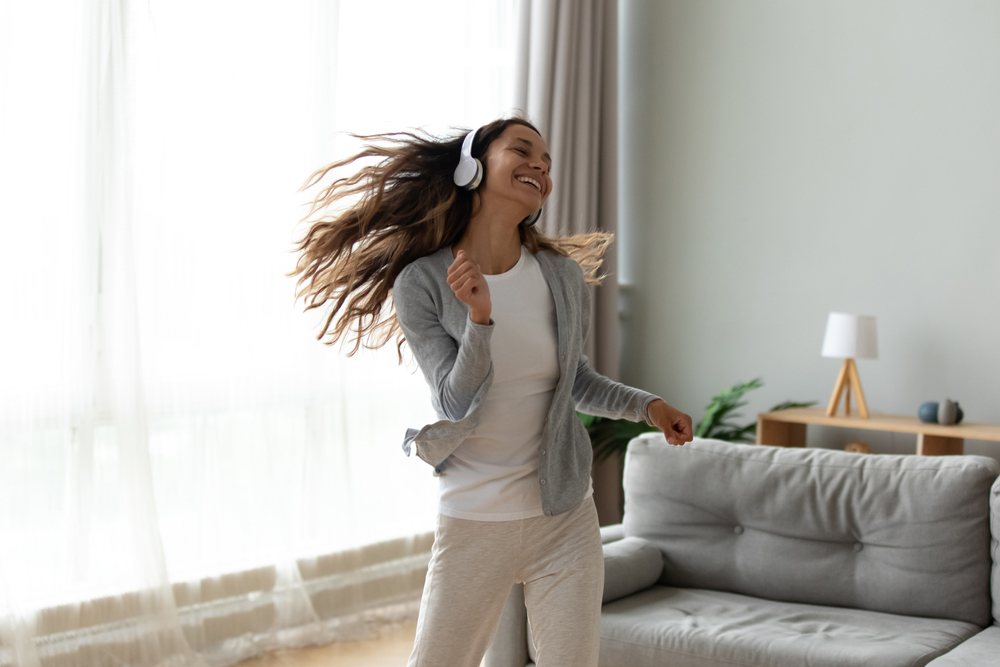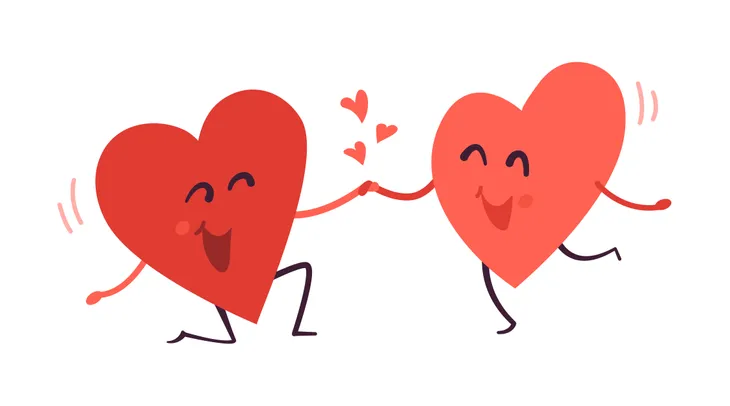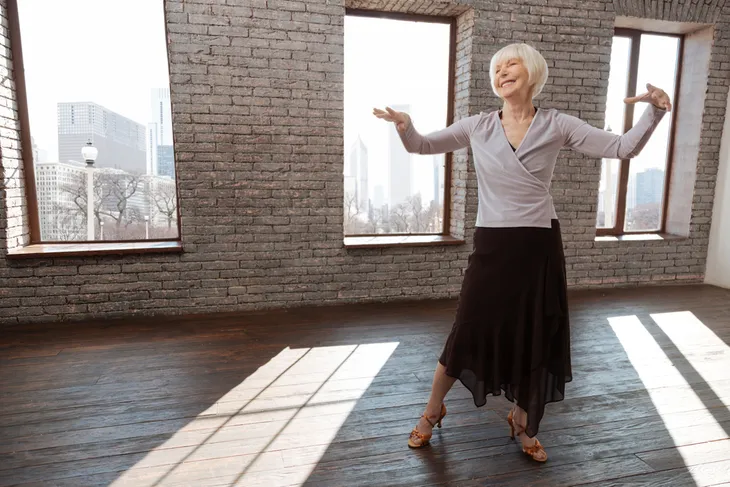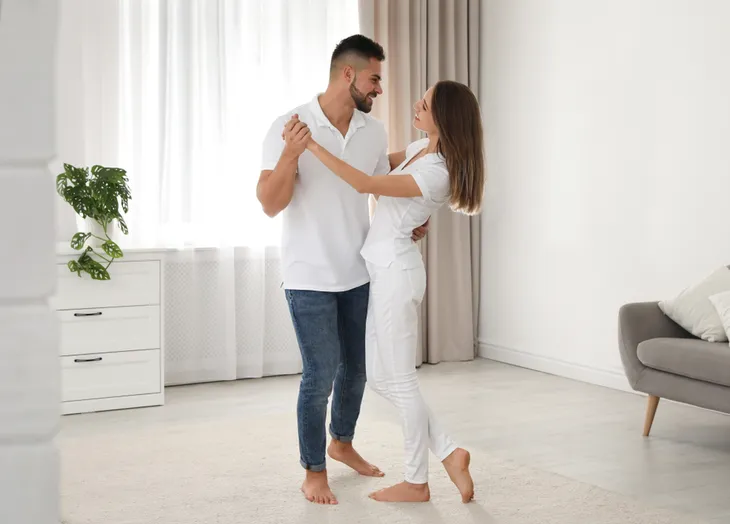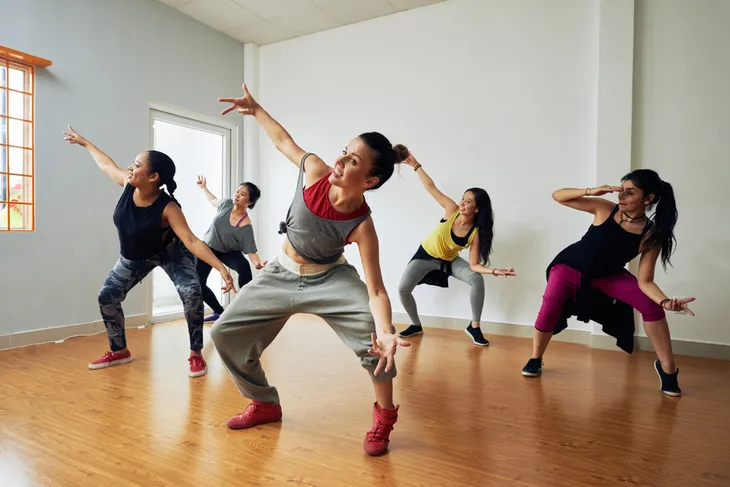They say you should dance like no one’s watching, and that’s actually good advice. Whether you’re dancing at a club, or in the shower, or you living room, there are many reasons to dance when you’re grabbed by the rhythm.
Berkeley University of California notes that dance can have many benefits for people of all ages, even for those who have nervous system diseases that can limit or complicate motor skills. So whether you prefer to tango, breakdance, or foxtrot, strap on those dancing shoes and take yourself or a partner for a spin. Here are seven reasons to dance about…
Reduces Depression and Anxiety
Dancing is exercise, and exercise releases endorphins that are your body’s “feel good” hormone. A relatively recent study posted on ScienceDirect notes that not only do subjects of dance movement therapy benefit by decreasing anxiety and depression, they also developed a more positive body image.
Another study from the National Centre for Biotechnology Information looked at the effects of Argentine tango dancing on depression compared to mindfulness meditation. While the study concluded that both methods reduced depression, stress levels were only significantly reduced in the dance participants.
Keeps Dementia Away
A 2013 article in Psychology Today explains that dancing “dramatically reduces” the chances of developing dementia and Alzheimer’s disease. Both can affect cognitive skills, memory, social skills and the ability to complete simple daily tasks. Alzheimer’s can be deadly due to loss of functions.
However, the article pointed out there’s a catch—only “freestyle” (not choreographed) dancing has these preventative benefits because it requires quick thinking that keeps your brain’s neural pathways strong. The article said that “frequent” freestyle dancing can reduce dementia by up to 76-percent.
Improves Heart Function
It’s possible to dance your heart out while helping your heart at the same time. Berkeley University explained that even people with stable chronic heart failure will benefit from dancing a waltz as much as a moderate-paced aerobic exercise routine.
The university noted that dancing improved heart and blood vessel function, as well as overall quality of life. It’s not just a waltz (ballroom dancing) that can benefit your heart—any dance that speeds up your heart rate is good, such as salsa dancing, Zumba and even square dancing. But dance the way you want to. Dancing is beneficial for your health regardless of the style.
Burns More Calories
You might be struggling to get up early in the morning before work to go for a jog to burn off that chocolate ice cream from the night before, but the truth is you don’t really need to drag yourself outside in the cold at the break of dawn. Cosmopolitan magazine lists dancing as one of 11 exercises that are comparable or better than jogging for calorie burning benefits.
If you’re counting calories, then Cosmo notes that “aerobic dance” (the kind of dancing you’d do at a club to upbeat music) can burn 443-calories or more per hour, compared to 557-calories an hour for running. However, that’s based on maintaining a 6-mile per hour pace for an hour, which is probably not as fun to you as shaking it out with friends to your favourite tunes.
Improves Balance
If you suffer from dizziness when you stand up too quickly, you may be able to correct the problem with dancing. Psychology Today notes in a 2013 blog that those prone to dizzy spells (including the elderly) can benefit from dance—and explains that the brain structure of professional ballet dancers is actually different from the average brain from years of training.
However, the blog assures that you don’t need to be a pro to get the benefits. This is backed up by a study posted on the National Centre for Biotechnology Information website that found subjects aged 58 to 68 taking part in dance-based training showed significant improvement in their balance compared to a group that not engage in physical activity. It also noted dance can be a tool to prevent falls in the elderly.
Boosts Your Libido
A 2012 article in Huffington Post said exercise is an effective way to increase your sex drive for middle-aged men. Not only will exercise (dance was listed as one of the best ways to get it) help men prone to diabetes lose weight, it will help boost testosterone levels and dramatically reduce hypogonadism which is linked to erectile dysfunction and disinterest in making love.
More good news for those looking to kickstart their love life is that the article says that the men in the study only needed to exercise for 2.5-hours per week (as well as improve their diet) saw big improvements over the course of a year. It also notes that losing fat in the abdomen can increase blood flow to the penis, which is a bonus to you and your partner.
Improves Social Connectivity
While dancing is an activity you can definitely do alone, but is even more fun when you have people around you sharing in the experience. WorldHealth.net posted an article in 2009 that stated “social dancing” has benefits for seniors, as it “leads to continued engagement with life.” Social isolation can lead to depression and even TIME magazine notes that being “highly social” can cut risk of dementia by 70-percent.
The World Health article goes on to say that dancing gives seniors an activity to focus on and something to look forward to on a regular basis. Dancing is a great way to cross barriers and connect different types of people, bringing them together towards a common goal. Not only that, the article explains that it can prevent symptoms of aging such as aches and pains.
